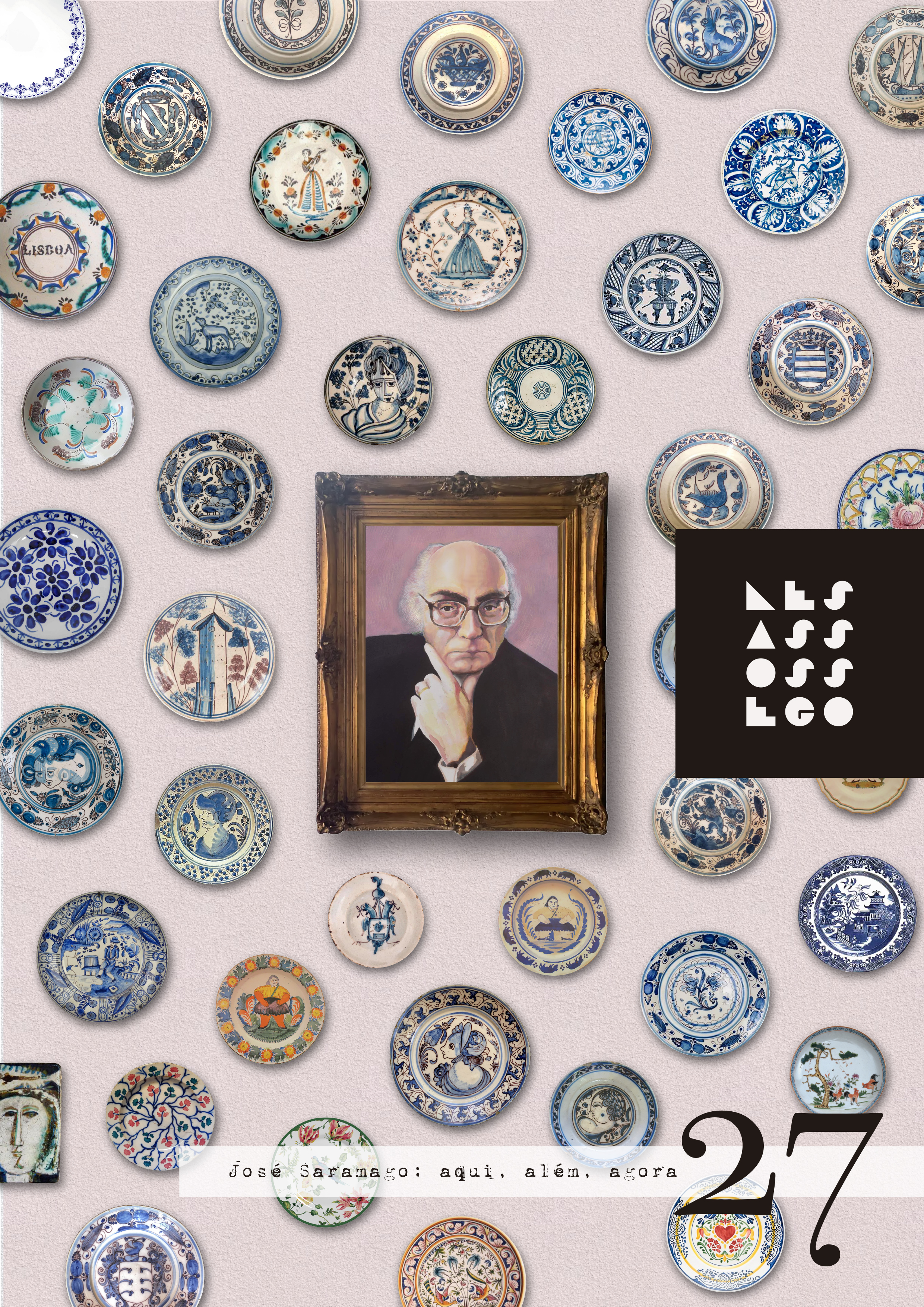Aspects of post-modernity in The Cave, by José Saramago
DOI:
https://doi.org/10.11606/issn.2175-3180.v14i27p82-95Keywords:
José Saramago, The Cave, Portuguese literature, Post-ModernityAbstract
In the following article, we will present a reflection on some aspects of Post-Modernity in José Saramago's novel The Cave (2000). To this end, it was necessary to illustrate a sketch on the constitution of the main character of the novel, the potter Cipriano Algor, as a subject who felt the impact of the logic of profit and its consequences in the life of the individual. For the accomplishment of the work, we used as theoretical apparatus notes from Zygmunt Bauman (2001), Beatriz Sarlo (2006), Anthony Giddens (1991), Slavoj Žižek (2012), among others, regarding the theory about the postmodern period and the profound changes in different segments of human life. About the specific literary criticism of the Portuguese writer, we use the notes of Ana Paula Arnaut (2008). The methodological procedure for the construction of the article took place through research in the theoretical framework already alluded to and by focusing on the key work of the present study, A caverna. Which led us to reflect on how much José Saramago was able to masterfully represent figures and aspects of memory and collective living.
Downloads
References
ARNAUT, Ana Paula. José Saramago. Lisboa, Portugal: Edições 70, 2008.
BAUMAN, Zygmunt. Modernidade líquida. Tradução de Plínio Dentzien. Rio de Janeiro: Zahar, 2001.
BERMAN, Marshall. Tudo que é sólido desmancha no ar: a aventura da modernidade. MOISÉS, Carlos Felipe; Tradução de Ana Maria L. Ioriatti. São Paulo: Companhia das Letras, 1986.
FERREIRA, S. Da estátua à pedra: percursos figurativos de José Saramago. São Paulo: Editora UNESP, 2015. Disponível em: <https://books.scielo.org/id/q65gt>. Acesso em: 27 mai. 2022.
GUATTARI, Félix; ROLNIK, Suely. Micropolítica: cartografias do desejo. 12. ed. Petrópolis, RJ: Vozes, 2013.
GIDDENS, Anthony. As consequências da modernidade. FIKER, Raul [tradução]. São Paulo: Editora Unesp, 1991.
LEGIÃO URBANA. Índios. [1986]. Disponível em: <https://www.letras.mus.br/legiao-urbana/92/>. Acesso em: 01 fev. 2022.
LOPES, João Marques. Saramago – Biografia. São Paulo: Leyda, 2010.
PLATÃO. Livro VII. In: A República. BURATI, Heloísa da Graça [tradução]. São Paulo: Rideel, 2005.
SARAMAGO, José. Memorial do convento. 40. ed. Rio de Janeiro: Bertrand Brasil, 2010.
SARAMAGO, José. As intermitências da morte. São Paulo: Companhia das Letras, 2009.
SARAMAGO, José. Caim. São Paulo: Companhia das Letras, 2009.
SARAMAGO, José. O homem duplicado. São Paulo: Companhia das Letras, 2008.
SARAMAGO, José. O Evangelho Segundo Jesus Cristo. São Paulo: Companhia das Letras, 2005.
SARAMAGO, José. A caverna. São Paulo: Companhia das Letras, 2000.
SARAMAGO, José. Todos os nomes. São Paulo: Companhia das Letras, 1997.
SARAMAGO, José. Ensaio sobre a cegueira. São Paulo: Companhia das Letras, 1995.
SARAMAGO, José. História do cerco de Lisboa. São Paulo: Companhia das Letras, 1989.
SARAMAGO, José. O ano da morte de Ricardo Reis. 2. ed. São Paulo: Companhia das Letras, 1988.
SARLO, Beatriz. Cenas da vida pós-moderna: intelectuais, arte e videocultura na Argentina. ALCIDES, Sérgio [tradução]. 4. ed. Rio de Janeiro: Editora UFRJ, 2006.
ŽIŽEK, Slavoj. O ano em que sonhamos perigosamente. BETTONI, Rogério [tradução]. São Paulo: Boitempo, 2012.
Downloads
Published
Issue
Section
License
Copyright (c) 2022 Thaíla Moura Cabral

This work is licensed under a Creative Commons Attribution-NonCommercial 4.0 International License.
O(s) autor(es) declara(m) automaticamente ao enviar um texto para publicação na revista Desassossego que o trabalho é de sua(s) autoria(s), assumindo total responsabilidade perante a lei nº 9.610, de 19 de fevereiro de 1998, no caso de plágio ou difamação, obrigando-se a responder pela originalidade do trabalho, inclusive por citações, transcrições, uso de nomes de pessoas e lugares, referências histórias e bibliográficas e tudo o mais que tiver sido incorporado ao seu texto, eximindo, desde já a equipe da Revista, bem como os organismos editoriais a ela vinculados de quaisquer prejuízos ou danos.
O(s) autor(s) permanece(m) sendo o(s) detentor(es) dos direitos autorais de seu(s) texto(s), mas autoriza(m) a equipe da Revista Desassossego a revisar, editar e publicar o texto, podendo esta sugerir alterações sempre que necessário.
O autor(s) declara(m) que sobre o seu texto não recai ônus de qualquer espécie, assim como a inexistência de contratos editoriais vigentes que impeçam sua publicação na Revista Desassossego, responsabilizando-se por reivindicações futuras e eventuais perdas e danos. Os originais enviados devem ser inéditos e não devem ser submetidos à outra(s) revista(s) durante o processo de avaliação.
Em casos de coautoria com respectivos orientadores e outros, faz-se necessária uma declaração do coautor autorizando a publicação do texto.
Entende-se, portanto, com o ato de submissão de qualquer material à Revista Desassossego, a plena concordância com estes termos e com as Normas para elaboração e submissão de trabalhos. O não cumprimento desses itens ou o não enquadramento às normas editoriais resultará na recusa do material.


